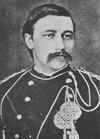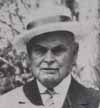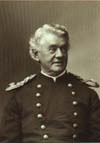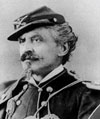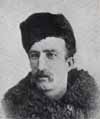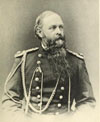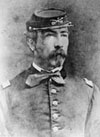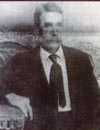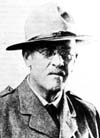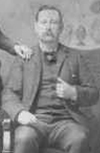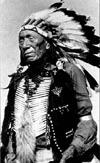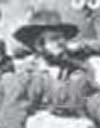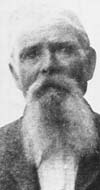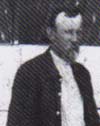Jasper R. Marshall was born on April 26, 1852, in Spring Valley, Ohio. He was a Private with Company L who was with the pack train and participated in the hilltop fight during the Battle of the Little Bighorn.
James P. McNally died in St. Paul, Ramsey County, Minnesota, on April 26, 1893, and was buried in Calvary Cemetery in St. Paul. He was a Private with Company I who was with the pack train and participated in the hilltop fight.
William Oman died on April 26, 1901, in Fargo, North Dakota, and was buried in the Riverside Cemetery there. He was a Private with Company D who participated in the hilltop fight.
Benjamin Franklin Burdick was born on April 27, 1851, in Grafton, Rensselaer County, New York. He was a Private with Company A who was not present at the battle because he was on detached service at Powder River, Montana.
Henry Armstrong “Autie” Reed (left) was born in Monroe, Michigan, on April 27, 1858. He was a civilian who was hired to accompany the Seventh on the campaign. He was the son of the half-sister of George, Tom, and Boston Custer, Lydia Custer Reed.
George Hose was born on April 29, 1850, in Hesse Cassel, Germany. He was a Corporal with Company K who participated in the hilltop fight.
Morris Cain was born on April 29, 1857, in Pittsfield, Massachusetts. He was a Private in Company M who participated in the valley and hilltop fights.
Treaty of Fort Laramie with the Sioux was signed on April 29, 1868.
Latrobe Bromwell died on April 29, 1923, in Washington, D.C., and was buried in the Soldiers’ Home National Cemetery. He was a Private in Company E who was not present at the Battle of the Little Bighorn because he became ill on Rosebud Creek and was sent back to the Powder River Depot. Those in his company who went to battle were killed.
Henry Moore Harrington (left) was born on April 30, 1849, in Albion, New York. He was a graduate of the United States Military Academy at West Point who served the Seventh Cavalry as a Second Lieutenant with Company C. He was killed with Custer’s Column, but his body was never positively identified.
Benjamin Beck died on April 30, 1910, in Camden, New Jersey, and was buried in Bethel Memorial Park in Pennsauken, New Jersey. He was a Private with the Band, so he was not present on the campaign.
John Roscoe Gray died in Worcester, Massachusetts, on April 30, 1915. He was a Private in Company B who was not present at the battle due to detached service at Powder River, Montana.
William Ephraim Morris (right) was born on May 1, 1854, in Boston, Massachusetts. He was a Private in Company M who was wounded while participating in the valley and hilltop fights.
Michael Christopher Caddle (left) died in Bismarck, North Dakota, on May 1, 1919, and was buried at the Fort Rice Cemetery in North Dakota. He was a Sergeant in Company I but was not present at the battle due to detached service at Powder River, Montana.
Henry August Lange died on May 1, 1928, in Chicago, Illinois, and was buried in the Mount Olivet Catholic Cemetery there. He was a Private with Company E who was with the pack train and in the hilltop fight.

